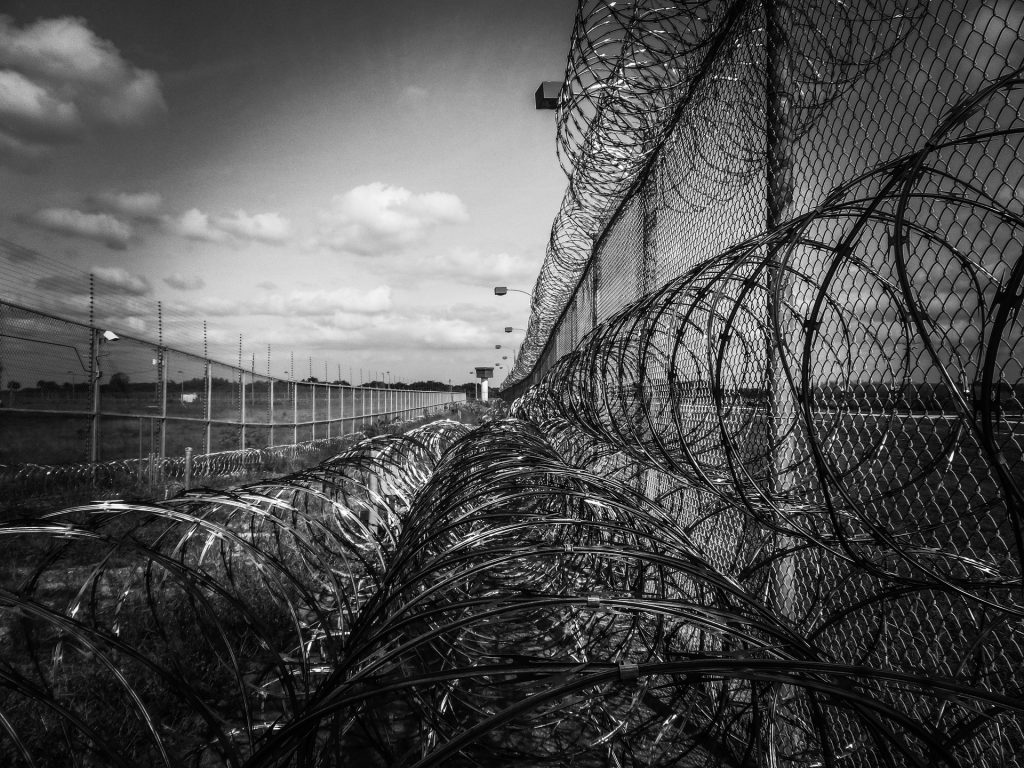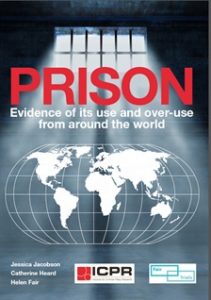Catherine Heard, from the Institute for Criminal Policy Research (ICPR) at Birkbeck, discusses the latest data released in the World Female Imprisonment List. Catherine directs the World Prison Research Programme at ICPR, which hosts and publishes theWorld Prison Brief.

This week at ICPR, we released the most comprehensive global dataset ever produced on women prisoner numbers. The fourth edition of our World Female Imprisonment List – published on 9 November – shows that the world’s female prison population has increased by about 53% since 2000. In comparison, the male prison population has gone up by around 20%. Numbers of women prisoners are rising in every continent of the globe, with significant increases reported in both developed and less developed countries.
The surge in numbers of incarcerated women is all the more troubling given the high levels of vulnerability we know exist among women who get caught up in criminal justice processes. Women and girls in prison usually come from backgrounds of disadvantage. They are highly likely to have been victims of crime themselves and are far more likely than other women to have histories of trauma, abuse, neglect and mental ill health. The World Health Organisation estimated in a 2009 report that up to 80% of women prisoners have an identifiable mental illness.
For virtually every country across the globe, the List gives information on the total number of women and girls in prison; the percentage of that country’s prison population comprised by women; and the number of imprisoned women and girls per 100,000 of the national population (the ‘prison population rate’). The List also includes information about trends in female imprisonment, at national, regional and continental levels. For most countries, the List gives trend data back to 2000 and at intervals since. (On the World Prison Brief website, trend data going back much further in time are available for many countries’ overall imprisonment levels.)
The List shows, for example, that in England and Wales, the total number of women prisoners has fallen somewhat since the high levels seen in 2005 and 2010, although it’s still higher than it was in 2000. We learn that our female prison population rate is 6.7 per 100,000 of the general population, compared with the Netherlands’ rate of 3.2 (reduced from over 11 per 100,000 in 2006).
Some of the biggest increases have occurred in countries struggling with severely overcrowded prisons, where conditions are already reported as inhumane. In El Salvador, for example, female prisoners are now at 10 times the level they were in 2000, while in Cambodia and Indonesia, numbers have increased six-fold. The data present a worrying picture of uncontrolled growth in numbers, often in countries whose prison systems are being expected to deal with ever-larger influxes, while deprived of the resources to do so.
If we set these new figures within the wider context of what we know about prison conditions and human rights infringements in some parts of the world, the implications are alarming. In Brazil, for example, where around about 44,700 women and girls are now in prison – more than four times the number in 2000 – severe resource constraints make it impossible for the country’s prison system to comply with laws stipulating that women prisoners be housed in separate facilities from men. As a result, some women are held in designated wings of men’s prisons, leading to a risk of assaults and violence from male prisoners and staff, as Human Rights Watch has reported. Female prisoners who are held in women-only prisons endure appalling levels of overcrowding and a lack of access to even basic medical care and treatment.
Our prisons research at ICPR aims to bring about a deeper understanding of the many interwoven factors that combine to drive increases in countries’ use of imprisonment and to find concrete, practical solutions to end the unsustainable increases in imprisonment levels that we have seen in recent history. To do this, we need to focus on providing a much better account of who it is that our states choose to imprison, and why.
This is the aim of our current project, Understanding and reducing the use of imprisonment worldwide, which we are undertaking in collaboration with a network of NGOs, academics, lawyers and criminal justice practitioners. The project entails an in-depth exploration of imprisonment in 10 jurisdictions across all five continents. Those countries are Kenya, South Africa, Brazil, the United States, India, Thailand, England & Wales, Hungary, the Netherlands and Australia. Among these are countries with some of the largest prison populations in the world: the USA, Brazil, India and Thailand are all in the top six globally. Most of these 10 countries have seen very significant increases in their female prison populations since 2000, as the List shows.
In our report, Prison: Evidence of its use and over-use from around the world, we discuss some of the key themes to be addressed if we are to reverse this worrying trend of rising prison populations. Perhaps the most challenging, yet important, among these themes is the need to ask what purposes imprisonment can reasonably and realistically be expected to serve, both as a matter of general principle and in individual cases.
Women across the world are predominantly incarcerated for minor, non-violent, property or drug-related crimes and are often primary carers for one or more children or older family members. This surely suggests that the economic and social costs of imprisoning women will, in most cases, outweigh the supposed benefits, which should prompt us to look more carefully at whom we imprison and ask, in every case, why we imprison and what we expect prison to achieve.
A note on the data
Compiling the List and all the comparative and trend data it contains is no mean feat – one that Roy Walmsley has undertaken every year since the World Prison Brief was founded in 2000. Having to work to the same cut-off date for all countries inevitably means that, by the time the List is published, more recent figures will have been released for many countries. People wanting to ensure they have the very latest data available should always check the World Prison Brief website – whether they are looking for data on a particular country or region, or want to see how countries rank globally.

 March 16th saw the launch of our new report,
March 16th saw the launch of our new report,  a one-minute animation by the Royal College of Art and filmed interviews with three people who have experienced pre-trial detention in different European countries. These can be viewed on
a one-minute animation by the Royal College of Art and filmed interviews with three people who have experienced pre-trial detention in different European countries. These can be viewed on 
